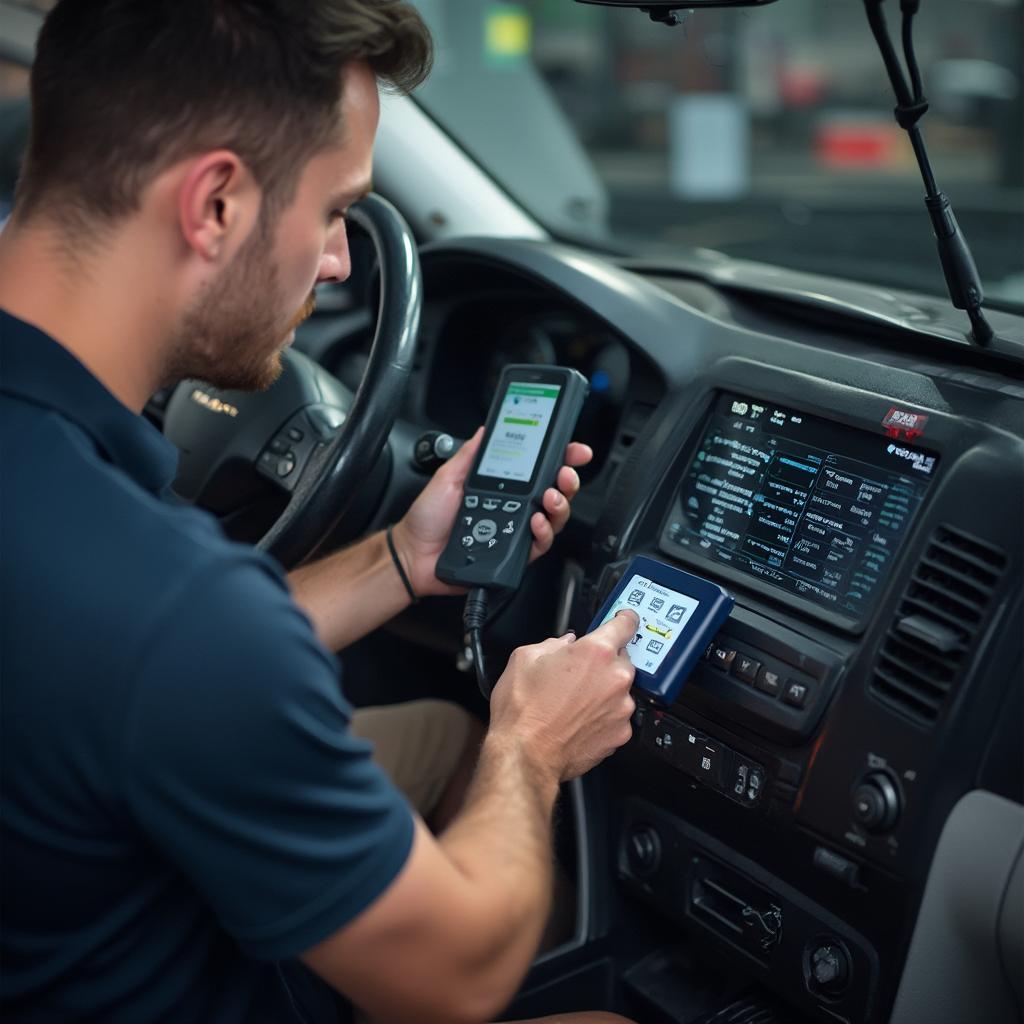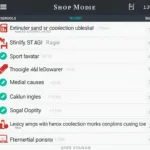The OBD2 P1000 code can be a source of confusion for car owners. This comprehensive guide will delve into the meaning of the P1000 code, its causes, symptoms, diagnostic procedures, and solutions. We’ll equip you with the knowledge to understand and address this code effectively.
The OBD2 P1000 code indicates that the on-board diagnostic system’s self-test has not yet completed. This doesn’t necessarily signal a problem; it often appears after a recent battery disconnect, ECU reset, or code clearing. obd2 scanner p1000 will be essential in retrieving this code.
What Does P1000 OBD2 Mean?
The P1000 code, unlike other OBD2 codes, isn’t a direct indicator of a specific fault. Instead, it signifies that the vehicle’s OBD2 system hasn’t completed all its self-tests. These tests are crucial for monitoring various systems and components within the vehicle. If the tests haven’t run fully, the system cannot reliably detect potential issues.
Causes of OBD2 Code P1000
Several factors can trigger the P1000 code. Common causes include:
- Recent Battery Disconnection: Disconnecting the battery resets the OBD2 system, requiring it to rerun all its tests.
- ECU Reset: Similar to a battery disconnect, an ECU reset also triggers the P1000 code.
- Code Clearing: Clearing existing codes using an obd2 scanner code p1000 can also cause this code to appear.
- Incomplete Drive Cycle: The vehicle needs to undergo a specific drive cycle to complete all OBD2 tests. This typically involves various driving conditions, including idling, acceleration, and cruising.
“Often, the P1000 code is simply a matter of completing the drive cycle,” says automotive expert John Davis. “Don’t panic, but do investigate if the code persists.”
Symptoms of P1000 OBD2
Typically, the P1000 code itself doesn’t cause noticeable symptoms. However, since it indicates incomplete self-tests, potential underlying issues may remain undetected.
How to Diagnose P1000
Diagnosing the P1000 code is relatively straightforward:
- Retrieve the code using an OBD2 scanner.
- Check for other codes. If other codes are present, address them first.
- Complete a drive cycle. Refer to your vehicle’s owner’s manual for the specific drive cycle requirements.
How to Fix P1000
Often, the P1000 code simply resolves itself after completing a drive cycle. However, if the code persists, consider these steps:
- Verify Repair: If the P1000 appeared after a repair, ensure the repair was completed correctly.
- Check for Pending Codes: Some scanners can identify pending codes, which may indicate potential issues. p1000 obd2 can provide more details.
“Persistence is key when addressing the P1000. Don’t ignore it, especially if it reappears after completing a drive cycle,” advises Sarah Mitchell, a seasoned mechanic.
Conclusion
The OBD2 P1000 code typically indicates incomplete self-tests within the vehicle’s diagnostic system. While often harmless, understanding its causes and addressing it proactively ensures the proper functioning of your vehicle’s OBD2 system and allows for accurate detection of potential problems. If you’re experiencing the P1000 code, don’t hesitate to use an 2010 ford f350 obd2 p1000 for accurate diagnostics.
 Mechanic Diagnosing Car with OBD2 Scanner
Mechanic Diagnosing Car with OBD2 Scanner
FAQ
- What does OBD2 P1000 mean? It signifies incomplete diagnostic tests.
- How do I fix P1000? Often, completing a drive cycle resolves the issue.
- Is P1000 serious? Not usually, but it can mask other problems.
- What causes P1000? Battery disconnects, ECU resets, or code clearing.
- Will P1000 go away on its own? It often does after a drive cycle.
- Can I drive with P1000? Yes, but underlying issues may go undetected.
- How do I complete a drive cycle? Refer to your vehicle’s owner’s manual.
Need more help? See also p1000 obd2 zyklus nicht beendet.
Contact us via WhatsApp: +1(641)206-8880, Email: [email protected] or visit us at 789 Elm Street, San Francisco, CA 94102, USA. Our customer service team is available 24/7.

